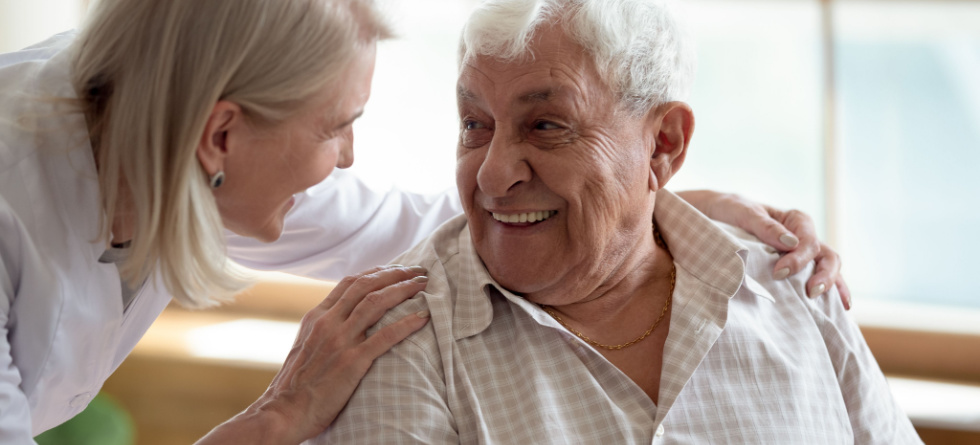Time and Intensity – Balancing Care for Optimal Well-Being
At Devoted Helpers in Sugar Land, Texas, we understand that providing quality care for individuals, particularly the elderly or those with chronic health conditions, requires a delicate balance of time and intensity. Caregiving is not a one-size-fits-all process. It requires thoughtful consideration of an individual’s needs, preferences, and circumstances. Balancing the right amount of time spent on care tasks and adjusting the intensity of those tasks is crucial in ensuring the comfort, dignity, and well-being of the person being cared for.
In this article, we’ll explore the importance of managing time and intensity in caregiving, how caregivers can assess the right approach, and why this balance is critical to providing the best care possible.
What is Time and Intensity in Caregiving?
Time and intensity refer to two key factors in caregiving that influence the quality and effectiveness of care…
- Time refers to how much time is dedicated to providing care for an individual. This includes how long caregivers spend on personal care tasks, companionship, physical support, and other activities.
- Intensity refers to the level of effort or support needed during a caregiving task. It can vary from a gentle, light touch when assisting with a task to more intensive physical or emotional care, such as when providing support with mobility or managing chronic health conditions.
Effective caregiving means knowing when and how to adjust the time spent on certain tasks and the intensity of assistance provided, always ensuring that the person in care receives the appropriate support for their needs.
Why Time and Intensity Matter
-
Personalized Care – Meeting Individual Needs Not everyone requires the same level of care. Some individuals may need only occasional assistance, while others may require more intensive support. Tailoring the time spent on caregiving tasks and adjusting the intensity of care ensures that each person receives the exact level of support they need.
For example
- A person with limited mobility may need more time spent on assistance with walking, transfers, and posture management. The intensity of care may also be higher due to the need for more physical support.
- A person with cognitive impairments, like dementia, may require more time spent on communication, emotional support, and ensuring they feel safe. The intensity of care could involve patience, reassurance, and managing challenging behaviors.
-
Avoiding Caregiver Burnout Caregiving can be physically and emotionally demanding. Striking the right balance between time and intensity ensures that caregivers are not overwhelmed. Spending too much time on one aspect of care, or providing care with high intensity for prolonged periods, can lead to caregiver exhaustion or burnout. Properly managing time allows caregivers to give consistent care without feeling overburdened.
Tip – It’s essential for caregivers to take breaks, ask for help when needed, and rotate tasks to avoid burnout. The balance of time and intensity in caregiving also means knowing when to rest and recharge.
-
Maximizing Comfort and Dignity One of the most important goals of caregiving is to maintain the comfort and dignity of the individual in care. By adjusting the amount of time and the intensity of care provided, caregivers can avoid overwhelming the person and instead provide support that is compassionate, respectful, and appropriate to their needs.
For instance
- A person with chronic pain may require more time to get into a comfortable position or have pain management strategies applied, but the intensity of the care may vary depending on how much support is needed at any given time.
- Someone receiving hospice care may require more intensive emotional and physical support during the final stages of life, with extra time spent ensuring comfort and relieving pain.
-
Promoting Independence A key goal in caregiving is to help the individual maintain their independence for as long as possible. Balancing time and intensity ensures that a person can continue to do what they are capable of, while also receiving support when necessary. By gradually adjusting the level of support, caregivers can encourage individuals to be as independent as possible without compromising safety.
For example, if an elderly person is able to walk short distances, they might be encouraged to do so with minimal assistance, while a caregiver is available in case they need help. The intensity is low, but the time spent allowing them to walk independently fosters their sense of autonomy.
How to Assess the Right Balance of Time and Intensity in Caregiving
-
Evaluate the Individual’s Needs Understanding the person’s physical, emotional, and cognitive needs is the first step in assessing how much time and intensity they require. Each person has a unique set of needs that may evolve over time, so caregivers should regularly reassess these needs. Key factors to consider include…
- Physical ability – Does the person need assistance with mobility, bathing, dressing, or eating? Are there any chronic conditions or pain that affect their ability to perform tasks?
- Cognitive function – Does the person have cognitive impairments that require more time and patience during communication? Are they at risk of wandering or becoming confused?
- Emotional state – Is the person feeling anxious, lonely, or depressed? Emotional care may require more time spent providing companionship and reassurance.
-
Adjust Time Based on Routine and Activities The time spent on caregiving tasks should be adjusted based on daily routines and the individual’s preferences. Some activities, like personal care or meals, may require more time than others. It’s also important to allow flexibility for activities that the individual enjoys, such as hobbies or socializing. Caregivers should be mindful not to rush through these activities to ensure that the person feels supported and valued.
-
Monitor and Adjust Intensity Based on Feedback The intensity of care should be adjusted based on the individual’s feedback. Some people may prefer less intense physical care, while others may need more direct and supportive assistance. Regularly checking in and being attuned to both verbal and non-verbal cues can help caregivers understand when the level of intensity should be increased or decreased.
For example
- If a person is feeling fatigued or in pain, a caregiver may need to reduce the intensity of physical assistance and focus on providing comfort.
- If someone seems frustrated with a lack of independence, caregivers can adjust the intensity of their involvement, allowing them to complete tasks at their own pace.
-
Communication is Key Open and clear communication between the caregiver and the individual receiving care is essential. The person should feel comfortable expressing their preferences and needs regarding the time and intensity of the care they receive. Caregivers should also communicate any changes in the individual’s condition that may require a shift in the care plan.
-
Collaborate with Healthcare Providers For individuals with complex medical conditions, collaborating with healthcare providers (such as doctors, nurses, or physical therapists) is essential. These professionals can provide guidance on how much time and intensity is needed for certain care tasks, such as wound care, medication administration, or physical therapy exercises.
How Devoted Helpers Can Support Time and Intensity Balance
At Devoted Helpers, we take pride in providing personalized care that strikes the perfect balance between time and intensity. Our compassionate caregivers are trained to adjust the time spent on various tasks and the intensity of care based on the needs and preferences of each individual. Whether someone requires minimal support or more intensive care, we ensure that their dignity, comfort, and well-being are always prioritized.
We help families by
- Assessing care needs – Evaluating the individual’s physical, emotional, and cognitive needs to determine the right balance of time and intensity.
- Adapting to changes – Adjusting the care plan as the person’s needs evolve over time.
- Providing specialized care – Offering specialized care for individuals with complex medical conditions or mobility challenges.
Balancing time and intensity in caregiving is an art that requires patience, empathy, and a deep understanding of the individual’s unique needs. By carefully adjusting the time spent on caregiving tasks and the intensity of support, caregivers can enhance the comfort, independence, and overall well-being of those they care for. At Devoted Helpers in Sugar Land, Texas, we are committed to providing this delicate balance to help individuals live their best lives, with the care and support they deserve.
If you’re looking for assistance in managing caregiving needs, contact Devoted Helpers today. Our team is ready to provide the personalized, compassionate care your loved ones need to thrive.


